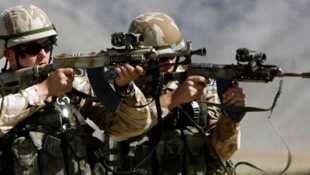Translated "Avante!" article by Pedro Guerreiro, Member of the Secretariat of the CC
The so-called “joint plan of action” reached by Iran with the US, France, United Kingdom, Russia and China – the five permanent members of the United Nations Security Council – and Germany, during the last weekend, although a “preliminary agreement” and limited in scope, has had and will continue to have multiple repercussions.
Among other aspects, that only any future evolution of the situation in the Middle East will help to better understand, this “preliminary agreement” recognizes Iran’s right – as is the case with any signatory of the Non-Proliferation Treaty (NPT) -, to develop a programme to use nuclear energy for peaceful means (including, of course, the technical and autonomous capacity to process uranium enrichment), as has been stated by the Iranian authorities during the past ten years. An inalienable right that some want to condition or even render impossible.
One should recall that, with the excuse of the Iranian nuclear programme and alleged intention, always rejected by the authorities of the country, of obtaining a nuclear weapon, Iran has been the target of sanctions, unilateral measures at the diplomatic, financial and economic level imposed by the US and European Union – sidelining the United Nations and international law -, as well as threats of aggression, even nuclear, and actions of real state terrorism, and systematic murder of its nuclear scientists.
However, the situation shows that the main responsible for the tension in the Middle East is North American imperialism due to its recolonising strategy, of interference and war, which aims to control this region and its huge resources – embodied in the so-called “Greater Middle East” – which has Israel as its chief ally. Israel, which oppresses the Palestinian people, which attacks and illegally occupies Palestinian, Syrian and Lebanese territories, and threatens aggression against Iran.
The “preliminary agreement” now reached helps to show that the main and real obstacle for the elimination of nuclear weapons in the Middle East are Israel – which is the only nuclear power in this region, is not a signatory of NPT and refuses to submit to the monitoring of its programme and nuclear installations by the International Atomic Energy Agency-, and the USA which carries them on its air and naval vessels and deploys them on its military bases, namely, in this region. And helps highlight that, more generally, the fundamental issue is – and often concealed – the need and just requirement, foreseen in NPT, to undertake effective negotiations and measures to put an end to the race for new nuclear weapons and ensure nuclear disarmament, in particular the nuclear powers.
However, we have to remain alert. There will continue to be many obstacles for a negotiated and peaceful solution, in line with the principles of the United Nations Charter, of the problem around the Iranian nuclear programme. It is no wonder that soon after the announcement of the “preliminary agreement”, and despite its limits, many forces came forward to question it, to derail the opportunity created by it and once again escalate tension and conflict.
Undoubtedly, many issues remain unanswered – and we have Iraq and Libya to warn us. But, as reality shows, it is the resistance and struggle of the peoples against interference and aggression that are the biggest obstacle against the aims of imperialism and a determining factor to achieve and defend sovereignty and national independence, social progress and peace. And this is also true in the Middle East, witness the heroic examples of the Palestinian people and of the Syrian people.


